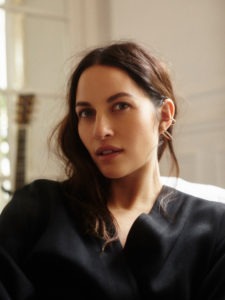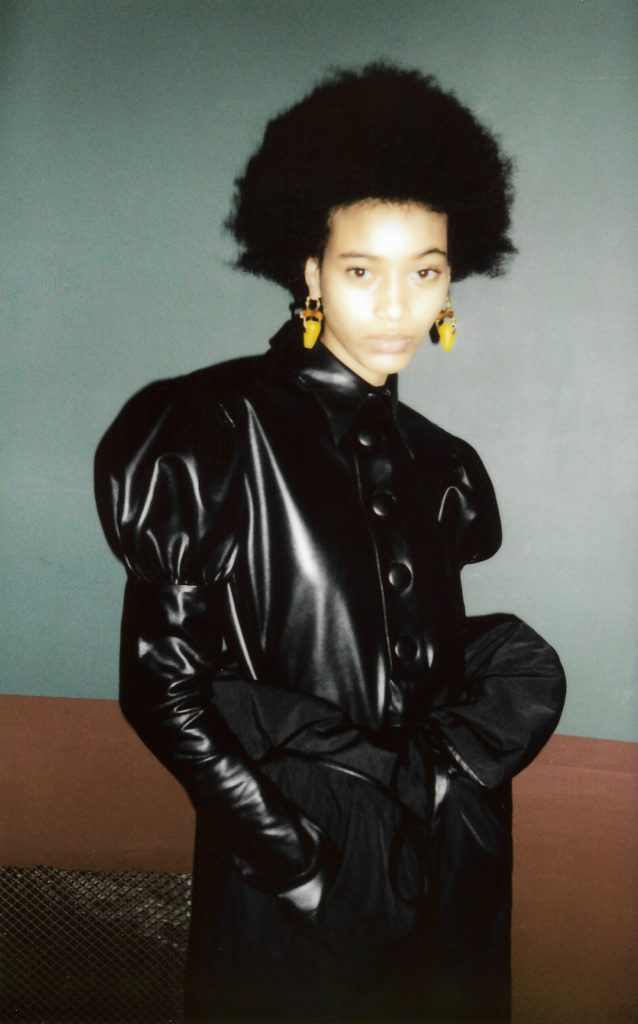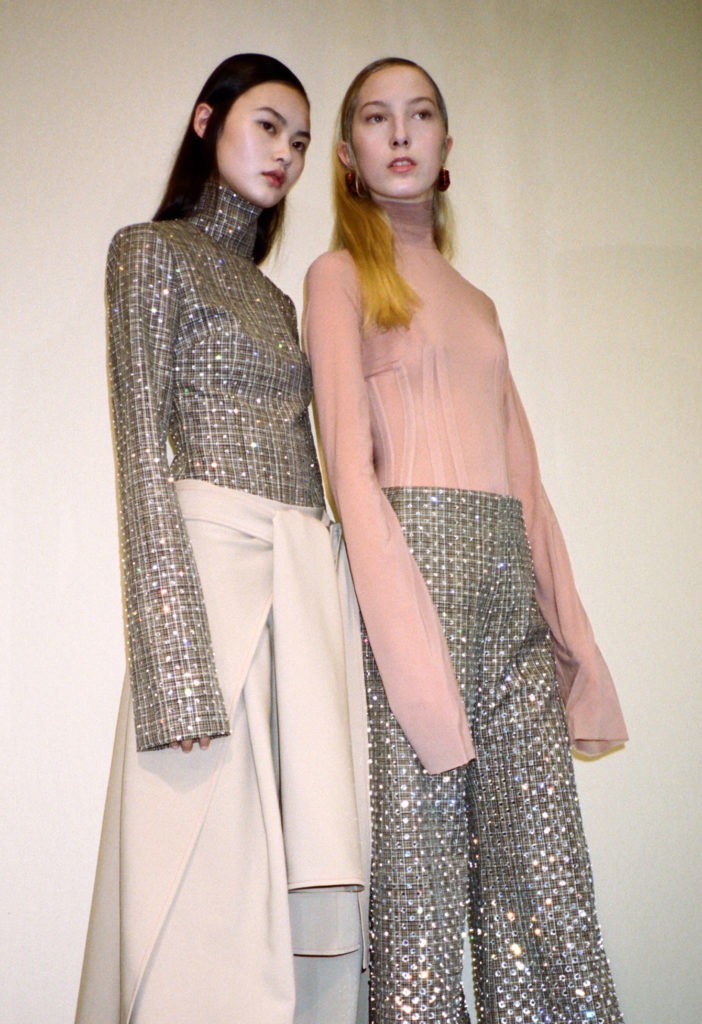
It’s rare to find a fashion designer who can express a brand DNA as strong and as signature as Kym Ellery’s eponymous label. Her voluminous tailored garments feel intuitive and effortlessly forward and feminine. Last year, the Paris-based designer celebrated 10 years in business, which inspired a bold move: this past January, Ellery debuted a re-imagined business model and dipped into the esteemed world of haute couture with a stylish high-fashion range made for the modern woman—Ellery’s speciality. Here, the fearless and uber-smart designer behind one of the coolest womenswear labels talks growing up in Perth, female empowerment, and the freeing side effect of dressing for yourself.
How did growing up in Perth influence your creative path?
“Perth is one of the most beautiful cities in the world. [The city’s] nature and the guidance of my mother, who’s an artist, helped me develop my creativity. Growing up, we created a lot of art, and I also love to sew. It was an ideal upbringing and I feel very lucky to have had that.”
What inspired you to start your own label?
“I graduated high school and had a gap year where I travelled, and accidentally found myself in Sydney. I fell in love with how much of a fashion industry there was there, and how beautiful the city was at the same time. In my early 20s, I got a job as a salesgirl at a store, and through that job, I fell into a role at RUSSH magazine. Their fashion editor came in once and wanted an intern, so I applied. That led to four years at the magazine: I started out interning and then assisted the editor. At the same time as my internship, I travelled to London and did summer school at Central Saint Martins. It was at that point where I was deciding, ‘Should I pursue fashion, or should I work in publishing?’ Because I was quite young, I chose to work at the magazine and learnt so much about the industry. I started at 21, and by 23, I felt I needed my own project. I had a few things I was making on the side (I’d make my girlfriends dresses, and I made a particular pair of tights that somehow ended up in the pages of Vogue Australia), and I remember thinking, ‘I’ve already got something in Vogue. I should probably start my own brand now.’ And that was that. I dived right in even though I knew very little, but I knew I’d figure it out along the way. And my goal was to come to Paris with it one day!”
How have you evolved and developed Ellery’s style aesthetic to what it has become today?
“The funny thing is that some of the pieces I did in my first and second collections are silhouettes that really define the brand: a big ballooning sleeve in my first collection and [flared shapes] in my second. I love the idea of nostalgia and bringing my favourite silhouettes from the ’60s and ’70s, but making them more wearable and fun for modern-day women. Volume became really important for me, and I would work with it each season by shifting and evolving it around the body. That’s the essence of how the Ellery DNA was born.”

How do you view the concept of women dressing for themselves?
“There was that moment when Leandra Medine [launched her blog] Man Repeller, and I think that that really started something. The notion of ‘repelling men’ is also the notion of dressing for one’s self and not caring about what others think. That links back to a feminist notion that I really believe in: equality. I also view fashion as a language that’s universal. You see people come together from different cultures, races, and religions— all united through this love of fashion. And fashion needs to be something that’s exciting, emotional, and expressive. That’s how I approach it, and that’s how I want people to receive it. You should always do things for yourself, and I believe in being a strong, independent woman. I live that way because I created this brand with no investors.”
Why is it so important for you to push for innovative fabrics in your collections?
“There was a very strong focus on textiles in my home growing up. My mother would walk to the bush and collect tree bark that had fallen. She would then put it in a pot of water and boil it to dye silks in different colours. As a child, to be exposed to that was so fascinating, and to have my mind be open to the different things that you can do with fabric, and how it is such an important part of making a garment, became a very key point in the brand. Every season I try to approach things differently, but it always comes down to the fabric and finding something that’s organic and technical. It’s an exciting time in textiles because of the technological advancements: taking plastic bottles and creating a beautiful jacquard—a luxurious piece of fabric. It’s also a super exciting time for us as designers to have access to those types of things and implement them in the range.”

How did it feel to move your shows to Paris?
“It’s a really special place and I’ve had such a positive experience here. It can be really intimidating coming to a country and not knowing the language, but when you make an effort to learn, [locals] are very generous and kind back. It was always my goal and my dream to show Ellery at Paris Fashion Week, and to now be a member of the Chambre Syndicale du Prêt-à-Porter des Couturiers et des Créateurs de Mode is really quite amazing.”
You announced that as of January 2018, Ellery’s runway collections would be shown during Haute Couture week. What spurred the decision?
“The industry has become so fast-paced, and I felt like there was no time or respect being given to the artisans and to the amount of time they take to make a garment. I wanted to look at the fashion week schedules and how things operate and find a new way to present the collection. The idea was to bring a timeline forward to sell and promote the collection that just happens to land during Haute Couture Fashion Week. It means we can sell and deliver earlier, which in turn creates time for the people making the garments. We will be creating two collections a year and splitting them into Chapter One and Chapter Two, which is basically pre-collection and main collection. We’re putting the emphasis on ‘pre’ because we want that to be what we put on the [runway]. It’s the collection that has the longest time on the shop floor, the one the buyers spend most of their budget on, and the one that the public has the most access to. We also wanted to look at supporting and be- ing involved in couture because it’s something that’s deeply written in our DNA, with our fabric and embroidery choices and the way in which we construct things.”
